50 Years Ago, Tim Horton Lost His Life Driving a Pantera
Fifty years ago today, on February 21, 1974, National Hockey League star Tim Horton was killed when he lost control of his DeTomaso Pantera and crashed in St. Catharines, Ontario. His death sent shockwaves through the sports world, particularly in Canada, where he was hockey royalty. Thirty years passed before details of Horton’s autopsy were released and the public learned exactly what happened to Horton. Today, most remember the Hockey Hall of Famer as the namesake of a massive doughnut café empire, which he founded with a business partner 10 years before his death.
***
It was the summer of 1972, and Miles Gilbert “Tim” Horton was considering retirement. Again. After more than two decades in the National Hockey League, mostly with the Toronto Maple Leafs, his 42-year-old body had taken more than its share of abuse. The star defenseman was also so nearsighted that he joked he might not see a puck quickly enough to avoid taking a shot to the head.
Horton had been “quitting” since 1969, and he had once again planned to retire after 1970–71, but thanks to a former teammate, Red Kelly, who was then coaching in Pittsburgh, he was persuaded to join the Penguins for the 1971–72 season. That decision didn’t end well, as a broken ankle and shoulder separation limited him to only 44 games. So Horton was back in a familiar situation, wondering if it was time to hang up his skates and devote all of his time and energy to his budding doughnut business.
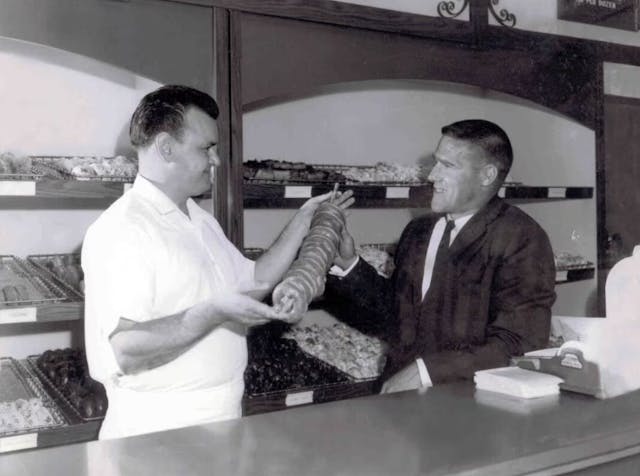
Then the Buffalo Sabres came calling. Former Leafs’ general manager Punch Imlach, at that point GM of the Sabres, desperately needed some star power—a grizzled veteran who could help shepherd a young team—and the four-time Stanley Cup champion filled the bill. Buffalo owners Seymour and Northrup Knox made Horton a deal he couldn’t refuse: $100,000 for the 1972–73 season, a nearly unheard-of salary at the time (well over $700K today). It was a successful partnership for both sides; Buffalo made the playoffs for the first time, and Horton was named the team’s MVP.
Horton made it clear afterward, however, that he was done. Imlach would have nothing of it. He offered Horton $150,000. Horton agreed to come back again if he was also given a DeTomaso Pantera—the radically styled, Italian-built coupe powered by a Ford V-8—as a signing bonus. Horton received the Pantera from Gateway Lincoln Mercury (at a cost of about $17,000) and the deal was done. Horton often drove the white Pantera the 100-mile route on Queen Elizabeth Way (the QEW), back and forth from Buffalo to his home in suburban Toronto.
Midway through the 1973–74 season, the Sabres were struggling to find the same success as the previous year. On February 20, 1974, the team traveled to Toronto to play Horton’s former club at the famed Maple Leaf Gardens. Instead of riding on the bus with his Buffalo teammates, Horton drove his Pantera.
Although the 5-foot-9, 210-pound Horton was known for his toughness—Detroit Red Wings superstar Gordie Howe once called him “the strongest guy in hockey”—he was unable to finish playing in the Sabres’ 4-2 loss to the Maple Leafs. During practice the day before, Horton had taken a puck to the jaw (perhaps fulfilling his earlier prediction regarding his eyesight), which left his face swollen and bruised. Regardless, he wanted to play in Toronto, since his friends and family would be in attendance, including his wife Lori and their four children. Early in the third period, however, the pain became too much for Horton to bear.
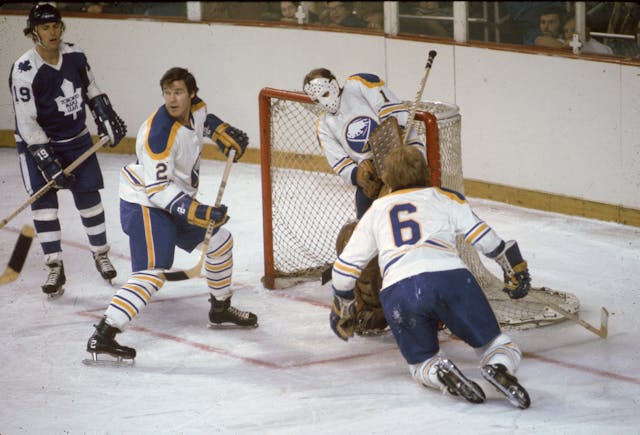
Afterward, Imlach chatted with the all-star while the rest of the Sabres boarded the bus. Imlach said Horton felt that he’d let the team down.
“He was hurting too bad[ly] to play a regular shift in the third period. We faded without him and lost …,” Imlach said, according to Bleacher Report. “After the game, he and I took a little walk up Church Street and had what was our last talk. He was down in the dumps because he didn’t like to miss a shift, and he felt he had cost us the game. I got on the bus with the team [and] Tim drove the cursed car back to Buffalo. He didn’t make it.”
The “cursed car” was Horton’s 1972 Pantera. As everyone knew, Horton liked to drive it aggressively and fast.
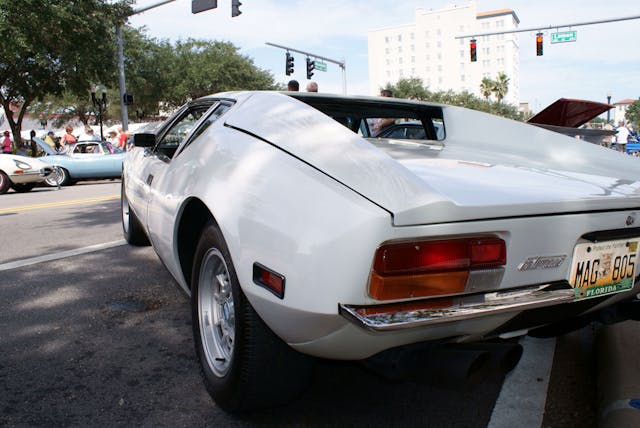
According to the Ottawa Citizen newspaper, Horton left Maple Leaf Gardens and met with his business partner, Ron Joyce, at the Tim Donut company office in Oakville, about 23 miles southwest of Toronto. “Tim was sitting in our office, his coat on, an ice pack wrapped around his jaw, his driver’s gloves on,” Joyce recalled in Open Ice: The Tim Horton Story, a 1994 biography by Douglas Hunter. “He was sitting in the dark with his feet up on the table, with a vodka and soda in his hand.”
Joyce later claimed that his friend didn’t consume enough at the time to get drunk. Others thought differently. At approximately 3:00 a.m. on February 21, Horton called his wife and his brother, Gerry. Lori Horton wrote in her 1997 book, In Loving Memory: A Tribute to Tim Horton, that “Gerry recognized Tim had been drinking, and he tried to convince him to stay where he was.”
The Ottawa Citizen wrote that there were conflicting accounts about whether Horton planned to drive to Joyce’s home in nearby Burlington to spend the night or continue to Buffalo. Ultimately, he chose to drive.
According to Open Ice, Joyce saw Horton take a handful of painkillers before he sped off in the Pantera, reaching an estimated speed of about 175 kilometers per hour (110 mph) on the QEW. The Ottawa Citizen reported that a motorist near Burlington alerted police to “a sports car driving dangerously fast.” When Horton roared into St. Catharines around 4:30 a.m., a police officer was waiting in his cruiser, but Ontario Provincial Police Constable Mike Gula said he couldn’t keep up with the Pantera.

“I saw him go by and took off after him, but I never caught him,” Gula later told the media. “As far as I’m concerned, he didn’t know he was being chased. I was doing over 100, but I lost sight; I never got close. A few minutes later I came [upon] the accident scene.”
Horton, who was not wearing a seatbelt, had been thrown from the vehicle. Gula found him in the grass median of the divided highway. He was still wearing the brown checker top coat, yellow sports coat, yellow shirt, brown pants, and brown boots that he was wearing when he left Maple Leaf Gardens that night.
Horton, 44, was declared dead on arrival at St. Catharines General Hospital at 4:50 a.m. Police found the phone number of his coach, Joe Crozier, inside his wallet, so Crozier was the first to learn the news.
“When they called me to come down and identify the body, I couldn’t believe that this could ever take place,’’ Crozier recalled. “When I lost Tim Horton, damn it, I lost my heart.’’
So did Imlach, who never forgave himself for agreeing to buy Horton the Pantera.

An autopsy, released in 2005 in response to a Freedom of Information request from the Ottawa Citizen, revealed that Horton had died of a broken neck and fractured skull. And although the Citizen wrote that hospital officials claimed at the time that “there were no contributing factors, and that no inquest was required”—perhaps to protect the star’s legacy—documents showed that Horton had a blood-alcohol level well beyond the legal limit and also had prescription drugs in his system.
A broken bottle of Smirnoff vodka was found at the scene, and Horton’s pockets contained five tablets of Dexamyl, a sedative, and two tablets of Dexedrine, a stimulant.
Horton’s Pantera was first transported to Simpson’s Towing Yard in St. Catharine and examined by police (and dozens of curious fans). According to the Ontario Provincial Police report, it was released to Grant Collision in Toronto on March 29, 1974. Salvage price was listed as $500 CAD. Speculation was that the car was destroyed, but the St. Catharines Standard recently reported that the engine, at least, was purchased by race car enthusiast Don Alexander, who converted Horton’s V-8 into a stock car engine and installed it into a 1973 Ford Mach 1 Mustang.
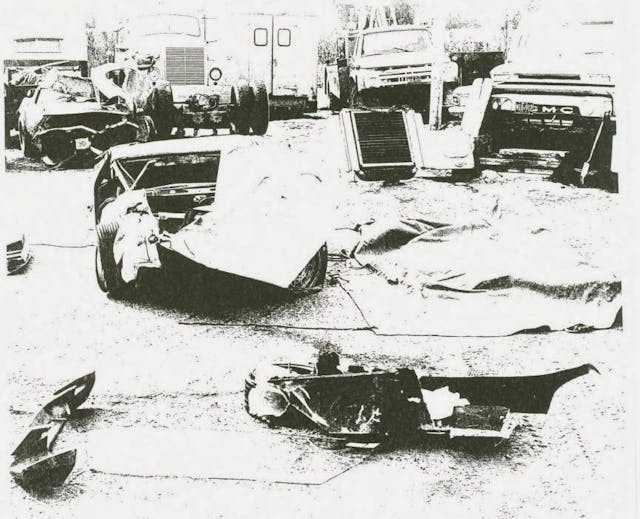
At the time of Horton’s death, there were approximately 40 Tim Hortons restaurants in Canada. Today there are some 5700 locations in 13 countries. According to the CBC, in 1975 Horton’s widow sold her husband’s half of the business to Joyce for $1 million CAD and a Cadillac Eldorado. Lori Horton later sued to get her half back, but her request was denied in court. She died of a heart attack on Christmas Day, 2000.
As for Joyce, in 1996 he sold the business to Wendy’s International in a deal worth $400 million CAD. In 2014, Tim Hortons was purchased by Burger King for $12 billion CAD ($11.5 billion USD). Joyce died in 2019.
Fans of Tim Horton lament the fact that he is better known today for donuts and coffee than for hockey. In the years since his autopsy report was released, however, Horton’s passing has also become an unfortunate, tragic example of the dangers of driving under the influence. Forever beloved as an athlete and businessman, his legacy endures, and his death serves as a “where were you when?” moment, especially for Canadian hockey fans.
***
Check out the Hagerty Media homepage so you don’t miss a single story, or better yet, bookmark it. To get our best stories delivered right to your inbox, subscribe to our newsletters.
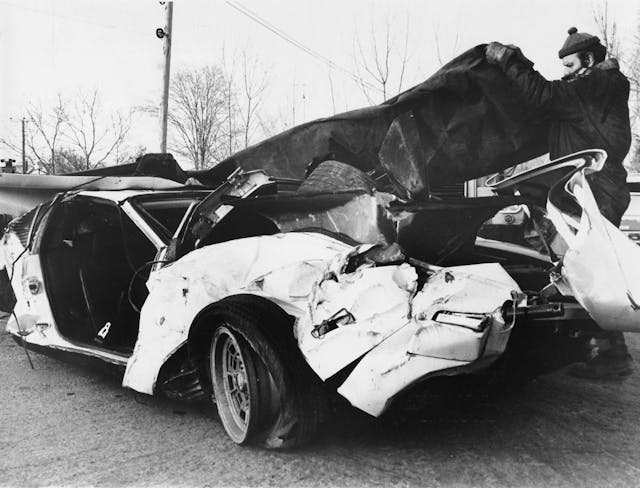
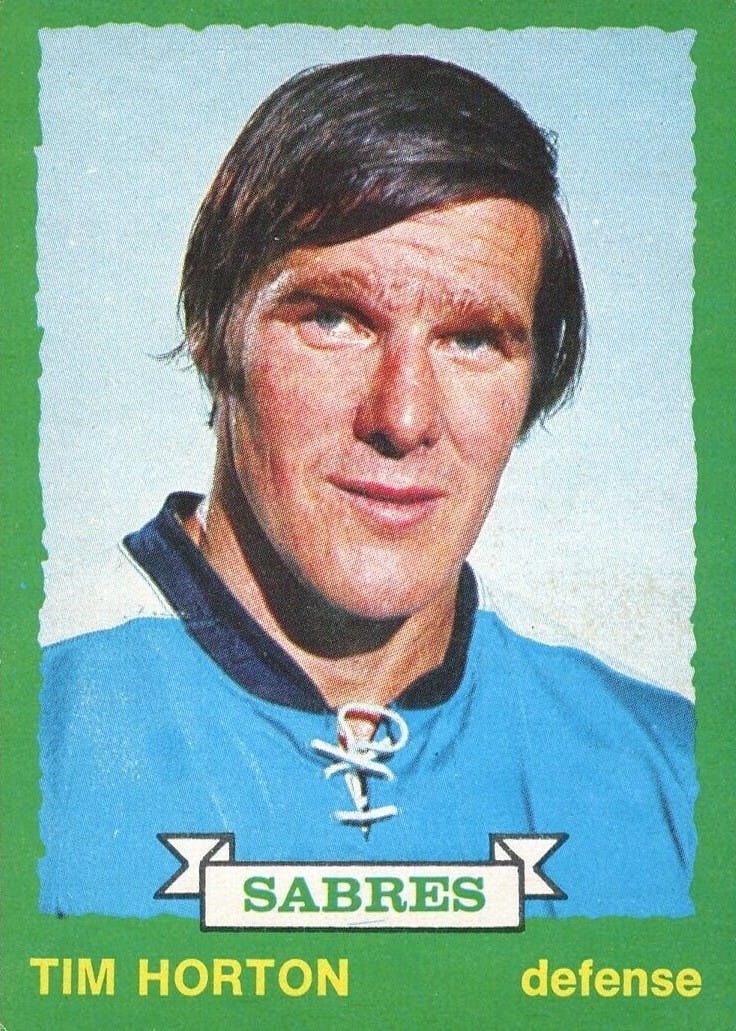
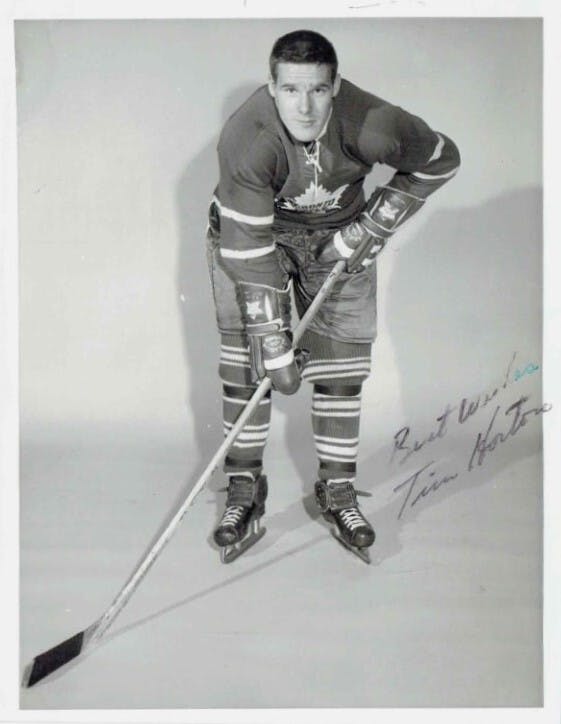


There is a museum for Tim Horton at the railroad yard in Cochcran, Ontario located in an old passenger car across from the station.
I lived in St Catherine’s at that time. My husband and I lived 4 blocks from the QEW. We heard the crash
20 plus years ago while showing my 1972 Pantera (which I still own) in Ontario a well dressed older gentleman came up to me and started a discussion. He said he worked for Ford at the time and was asked on behalf of Ford to examine the car at the junkyard after the accident. He said had Tim worn his seat belt he would have probably lived, as he said the drivers side door was still operable and the driver’s area was not severely compromised (as seen by the one picture). He also said (however I wouldn’t know how he knew this) but when Tim was negotiating his contract for the car he asked for a Ford Lincoln dealership car not specifically a Pantera. Coach was not happy after a agreeing to the deal to find out it was a $17,000.00 car from Lincoln Mercury. Who knows if that’s true?
The version of the story I recall hearing back in the 70’s was that at first Tim just told the Sabres organization that he wanted a ‘Ford’. The Sabres were thinking ‘LTD’ and agreed. It was only afterwards that they found out they were on the hook for the Pantera.
Great story, but Oakville is not south of Toronto. Lake Ontario is. (Oakville is west).
Also the crash didn’t happen near St Catharines but in it, near the Lake Street overpass.
A good telling of the story. That day, I was working the early morning news shift at St Catharines radio station CKTB. On the way into work I paid a social visit to the local police station. I was chatting with the desk sergeant when we heard the call come in. He asked if I would like to tag along (different times back then) but I looked at the time and realized that if I did, I would be late for work and behind the 8-ball for the rest of the morning. So I refused. Needless to say I missed being an eye witness to the aftermath of a block buster story. When the police called to say who it was, we did get to break the news to the rest of the world. I later checked out the Pantera and its cabin was intact…possibly a survivable crash if he had been strapped in.
As I read this I’m looking out the window of my condo at a Tim Hortons sign. That’s what being a Canadian is.
When Tim died he had a successful Canadian doughnut chain. He never lived to see it be an international success as well as a Canadian icon. Ok, good marketing made it iconic but just the same we do love our heroes in Canada.
Hey didn’t Vince Neil have a bottle with him when he crashed his Pantera?
I remember being at a Sabres dinner which was always followed by an auction of Sabres memorabilia. Tim Horton’s wife donated a pair of his skates and Jim Schoenfeld was the winning bidder. My husband got a picture of Jim picking up the skates. You could see in Jim’s face how much he missed Tim.
Word wrap issues here, too. Windows laptop platform.
Word wrap issue here too, past few days but nowhere near as annoying as “you are posting too many comments” when I leave about three each week.
One of Hagerty’s best stories
Love a double double at Timmies
Tim Hortons was a tough man. They aren’t made like that anymore.
My name is mike allen my father was Ed allen the summer of 1973 I was 12 years old my dad took me and my older brother pat to Huntsville Ontario to Tim’s cottage to wire a sauna in his boat house Tim Horton thru a air mattress in the lake and told me to swin to it as I swam to it he dove in and lifted my on the mattress my dad was a very good friend of Tim’s we spent that night at his cabin and went back to Toronto the next day he was my hero I always think how cool he was mike
I grew up a Maple Leafs fan starting in the 1950s. Tim Horton was one of the best defencemen ever to play for the team, and I found this article very interesting. There is so much more history about Tim and the business that people need to know about.